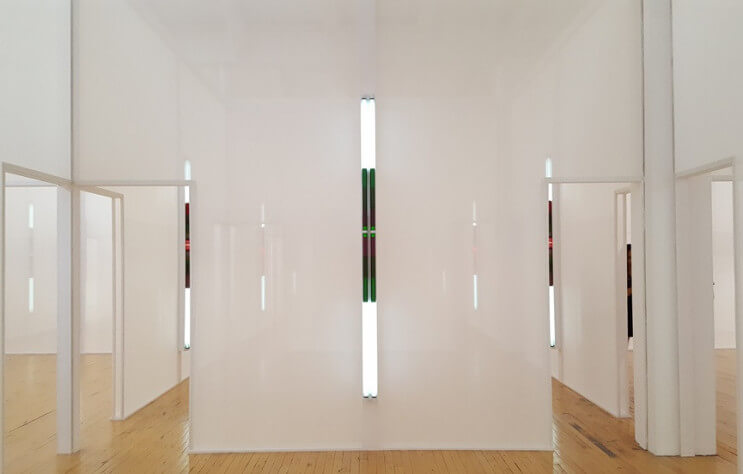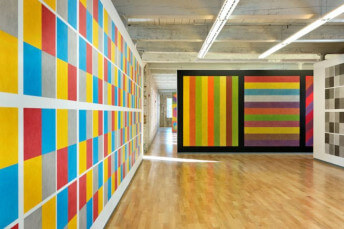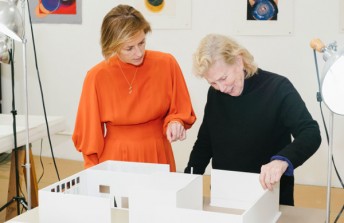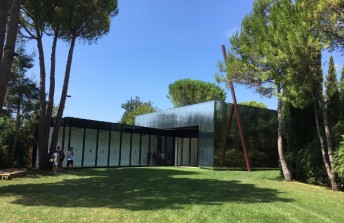Keepers of the Artistic Vision - Dia:Beacon Museum
Sep 30, 2016
Without shadows how could we understand the value of light? In the 1890s, Beacon, New York was an industrial powerhouse known as the Hat Making Capital of America. By the 1990s it was in shadow, with eighty percent of its commercial and industrial properties abandoned. Today, Dia:Beacon museum, one of the biggest and most important modern art museums in the world, calls the city of Beacon home. The museum occupies a former factory on the banks of the Hudson River, where workers once printed boxes for Nabisco products. The primary function of Dia:Beacon is to house the permanent art collection of the Dia Foundation, which includes works from 25 of the most significant artists of the 1960s and 70s, including Donald Judd, Andy Warhol, Dan Flavin, Michael Heizer and Richard Serra. When it opened in 2003, this one-of-a-kind art destination sparked a commercial and cultural resurgence in its surrounding community. The combination of its stunning architecture, idyllic grounds, and monumental collection of abstract modern art have, in a multitude of ways, gradually helped restore Beacon to its namesake essence as a city of light.
A Radical Time For Art
In 1969, the art dealer Virginia Dwan, of the eponymous Los Angeles and New York galleries, made a highly unusual gesture as a patron of the arts. She gave the artist Michael Heizer the necessary funds to purchase a 60-acre plot of land in the Nevada dessert. The vacant land was located adjacent to a natural canyon. Heizer dug a 30-foot wide, 50-feet deep, 1500-foot long trench across the length of the land running alongside the canyon, tossing the displaced stone into its depths. He called the finished work Double Negative. Upon completion of Double Negative, Heizer promptly deeded the land back to Dwan. Fourteen years later she donated it to the Los Angeles Museum of Contemporary Art—under the condition that the trench never be restored. The objective Heizer had in mind was that the desert would gradually reclaim the piece, which, from its inception, has always been about what is not there.
As radical as it was, the effort underlying Double Negative was not unique. Throughout the 1960s, 70s and 80s, many prominent artists were engaged in radical experiments that often resulted in the creation of aesthetic phenomena that far exceeded the limitations of traditional exhibition spaces. Just a few examples: in 1970, the artist Robert Smithson began construction of Spiral Jetty, a site-specific earthwork located in the Great Salt Lake in Utah; in 1977, Andy Warhol created his Shadows, a series that consisted of 102 separate canvases measuring 76 × 52 inches each, in theory constituting a single painting in 102 parts; and in 1981, the sculptor Richard Serra installed his site-specific sculpture Tilted Arc in Federal Plaza in New York City. The 120-feet long, 12-foot tall, 2.5-inch thick steel structure dominated the space and redirected the flow of pedestrian traffic.

Agnes Martin - Artworks. Installation view.
Enter The Dia Foundation
The radical work these artists were doing obviously involved unique challenges. Monumental works like Tilted Arc had dubious commercial value, and yet were expensive to make. Site-specific earthworks like Double Negative and Spiral Jetty confronted the spatial conditions within a specific environment, making them partly about perspective, though their remote locations prohibited most viewers from ever perceiving them. Large-scale serial works like Shadows could only make sense within a massive and specialized exhibition space capable of accommodating them, which was unlikely to exist since they were created without consideration of that space ahead of time.
The Dia Foundation was created precisely to address these specialized challenges. The not-for-profit foundation was founded in 1974 by a group of philanthropic-minded investors who were determined to provide patronage for experimental and monumental art. Led by Philippa de Menil, whose mother Dominique de Menil founded the Menil Collection in Houston, the group specified that their goal was to provide financial support art works “whose nature or scale would preclude other funding sources.” In essence they wanted to make sure that what they considered to be important art works, but which were inherently impractical and had no market value, would be able to exist.

Blinky Palermo - Artworks. Installation view.
The New York Years
As soon as it was created, the immediate work of the foundation was to financially support a group of pre-selected artists in New York by providing them with a stipend and a studio to enable them to make their experimental work. That group of artists included Dan Flavin, Donald Judd, Walter De Maria, La Monte Young, John Chamberlain and Marian Zazeela. Next, the foundation began the process of acquiring old factory and warehouse buildings around New York City that could be transformed into exhibition spaces for the works of these artists.
One of the primary concepts the foundation had in mind from the beginning was the idea expressed by Donald Judd of site-specificity, that the only way for a work of art to be adequately experienced is for the work to be designed for a specific space, or for the place where it is exhibited to be specifically designed with the work in mind. With that objective at the forefront of their actions, the foundation bought and transformed multiple buildings throughout New York City over a series of years. These buildings housed specific works, as well as galleries for short-term exhibitions, lectures, poetry readings and performances. Most were then eventually resold to help fund the foundation.

Dan Flavin - Artwork. Installation view.
Patron of Site-Specific Arts
In addition to patronizing artists and creating exhibition spaces, the Dia Foundation has also focused on commissioning, acquiring and maintaining some of the most important site-specific artworks in the world. In 1977 they commissioned the creation of The Lightning Field by Walter De Maria. This monumental work of land art consists of a one-mile by one-kilometer grid made up of 400 stainless steel poles planted in the ground in the New Mexico desert. On certain nights the poles attract lightning. Dia also initially funded the work Donald Judd and John Chamberlain began in 1980 in Marfa, Texas, and helped fund the eventual creation of the Chinati Foundation that currently maintains that site.
Other site-specific works Dia currently supports include 7000 Oaks, a monumental work begun by Joseph Beuys in Kassel, Germany, and Roden Crater, the seminal accomplishment of the artist James Turrell located in a dormant volcano in the painted desert of Arizona. The foundation has also contributed funding and support for multiple museums built especially for specific artists, such as the Dan Flavin Art Institute in Bridgehampton, The Andy Warhol Museum in Pittsburgh and the Cy Twombly Gallery in Houston.

Gerhard Richter - Artworks. Installation view.
The Dia:Beacon Museum
It makes sense that throughout the decades since forming in 1974, the Dia Foundation has had many opportunities along the way to collect art by the artists with whom they worked. Some of the pieces they have collected are in fact considered to be essential to the understanding of the oeuvres of these artists. It was with that collection of works in mind that the foundation acquired that former Nabisco box-printing factory in Beacon, New York. The building was perfect for their maser plan, as it offered 160,000-square feet of exhibition space situated on 31 acres of riverside land.
In order to fulfill their vision the space needed to be converted in a thoughtful way in order to specifically accommodate the artworks that would inhabit it. For this job, Dia enlisted the artist Robert Irwin. In partnership with an architecture firm, Irwin meticulously designed Dia:Beacon to permanently accommodate the work of 25 specific artists, along with extra space for other exhibitions and new site-specific installations. Among the permanent exhibitions on display are works by the greatest abstract artists of the 1960s and 70s, including Agnes Martin, Gerhard Richter, Sol LeWitt, Blinky Palermo, Dan Flavin, Richard Serra, Michael Heizer, Walter de Maria and Donald Judd.

Sol LeWitt - Artworks. Installation view.
Featured Image: Robert Irwin - Artworks. Installation view.
By Phillip Barcio






